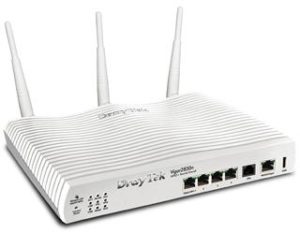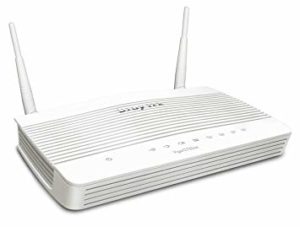Ok, this is a bit more than a bite size article so have a good munch.
Broadband – I still don’t get it
What is broadband? A lot of people have got it and use it but don’t really quite know what it means. To answer this it is useful to go back to when we were using dial up. When we had this you would have to manually connect to the internet which would take a minute or 2 and you would have to listen to a cacophony whilst a connection was being made. You would then have time to go and make a cup of tea and feed the cat whilst you waited for each web page to come up. You could call this narrow band and like a narrow pipe you could only get a relatively small amount of, data in this case, down it at a time. After you were finished you would disconnect. Payment was usually per minute for the time you were connected paid through your phone bill.
Then came ADSL broadband which had some great things about it. It was a much fatter pipe so you could get a lot more data down it much faster, you could leave it connected 24/7, you paid a set monthly amount and, you no longer had to wait an age for a page to download, hurrah (now who’s going to feed the cat)!
The speed of broadband has increased by leaps and bounds in the last 10 years. The speed is measured in bits per second which means it is measured by the smallest unit of a data that can be transmitted, a 0 or a 1. Speeds have increased in stages approximately as follows (and sticking with the pipe analogy):
“kbs” means kilobits per second, “mbs” means megabits per second and “gbs” means gigabits per second (as was pointed out by David commenting below, this analogy is not scientifically accurate and is merely illustrative).
- 56kbs – dial up – like a thin 1mm diameter pipe
- 512kbs – the first broadband – like a 10mm diameter pipe
- 2mbs – now it’s starting to get really useful – a 40mm pipe
- 8mbs – ADSL Max – now we can more easily stream video and make voice calls – 160mm pipe
- 16mbs/24mbs – ADSL2 – Great for cloud computing (accessing software and data remotely) – 320mm/480mm pipe
- 40mbs/50mbs – The latest ADSL being rolled out now – 800mm/1000mm pipe
- 100mbs – expensive leased lines used mostly by businesses (I’ll explain more about this later) – even bigger pipe
- N x gbs – very expensive, very fast leased lines of one or more gigabits used by larger businesses (I’ll explain more about this later) – really big pipe
Connecting to the internet
Sticking to the pipe analogy there are a few things you need before you can connect to the internet. You need the pipe which allows data to come and go along it and you need something to send and receive the data at each end.
BT or some other telecoms provider comes along, installs a line in your premises and then your’ ISP (Internet Service Provider) gives you a login to connect to their internet service so that you can send and receive data to and from the internet using web browsers like Internet Explorer, Firefox or Chrome. A web browser, email browser, phone, router etc provides the data handling at your end and the internet connection service and email servers handles the data at the providers end.
Another thing worth mentioning here is that accessing the internet and sending and receiving emails are 3 different services that can be provided by one or more suppliers. In the case of emails you may have several suppliers for example; Google mail, your ‘ ISP, your’ business email etc.
Types of broadband and suitable routers
There are a few different types of broadband which split broadly into the following types:
- ADSL – this stands for “Asymmetric Digital Subscriber Line” (yuk) which really just means that you can receive data faster than you can send it.
- Symmetrical – you can send and receive data at the same speed.
- Shared or contended – you are sharing a service, ADSL is normally a shared service which means you are sharing the ADSL with Fred down the road, the business next door and so on. This can effectively slow the service down so for example, when all the kids come home from school and start downloading films and playing internet games with their mates your service may get considerably slower. Business services tend to be less contended and sometimes you might end up getting the service all to yourself, for a while at least.
- Not shared or uncontended – the service is all yours , there is ADSL available that is uncontended but mostly this applies to leased lines which are connections mostly used by business.
The next question might be; how is it delivered to you?

ADSL – This is what most of us use either at home or in business. There are a few variants both are normally installed by BT. A telephone line is installed at your premises and is either connected to BT’s equipment at the exchange or to another provider’s equipment that has been installed in a BT exchange such as TalkTalk or Orange have done for example. This is known as LLU which stands for Local Loop Unbundled.
ADSL is getting faster mostly because BT are improving their infrastructure, the latest is FTTC which stands for Fibre To The Cabinet. BT are installing optical fibre cables all the way to the green cabinet in the street where copper cables are then distributed from to connect up individual premises, if you look around the street you will spot these. Optical fibre cables can carry much, much more data than copper cables; they are cables with strands of glass in the centre.
And here are the links to some fab Draytek routers suitable for ADSL:-
- For home use try one of these – Draytek Vigor
 2762AC
2762AC - For businesses a very capable Draytek Vigor 2862AC
EFM – This stands for Ethernet First Mile. This is an advance on existing technology. Instead of delivering an ADSL broadband connection on one copper phone line, 2 or more are combined to give you a higher guaranteed minimum speed so that for example 20mbs may be guaranteed, subject to a site survey. This service has a higher service level and better resilience than ordinary ADSL lines. It’s aimed at businesses wanting more speed and reliability but don’t yet want to pay the cost of a leased line which costs more to install and rent. A special connection box will come with the EFM after which you can connect it into a router such as the Draytek Vigor 2926AC.
SDSL – This stands for “Symmetric Digital Subscriber Line” and has been pretty much superseded by faster ADSL’s. This broadband provides the same speed either way but only goes up to 2mbs. If you have this already or have a good use for it (still used for voice calls over the internet sometimes) then the Draytek Vigor 3100 is a good choice. [Update 04/01/2019 – This service is now redundant.]
Cable – This is mostly provided by Virgin Media these days. This is broadband delivered for the most part by optical fibre and is capable of speeds up to 350mbs. It’s a similar but alternative service to the ADSL delivered on BT type phone lines. The Draytek Vigor 2762AC is fine for this type of broadband and is more capable than the routers supplied by Virgin. After BT have rolled out their FTTC broadband there will not be so much difference between Virgin’s offering and normal ADSL. [Update 04/01/2019 – This service is now available in many areas.]
Leased Line – A much more expensive service aimed at businesses. This is provided on a dedicated optical fibre circuit for anything beyond 10mbs. It can come as a restricted supply, that is a line capable of providing 100mbs is installed but you might only get 50mbs depending on what you need and how much you want to pay, this can be easily upgraded later on. This is NOT a shared service so the owner of it has the full capacity of it. It usually has a fast response service level so if it goes wrong it will be fixed relatively quickly. It can be used to access the internet or to provide a fast service between offices. If you have 50, 100 or more employees in one place you will probably want one of these. You can get gigabyte supplies but these are more expensive still. An appropriate connection box will be provided with the line which can then be fed into a router such as the Draytek Vigor 2960. If you are paying for a leased line you will almost certainly want some ADSL broadband for backup which can be plugged into a router so that if the leased line does go down it wall fail-over to the ADSL.
For today’s digression and amusement how about this on YouTube – Click here – if you are in work you may want to wait until you get home, it’s not rude or anything but beware your companies internet policy.
Well, I think that’s quite a bit of info for one post, next time – “How do I find out what broadband is available to me and how do I choose”.

 2762AC
2762AC